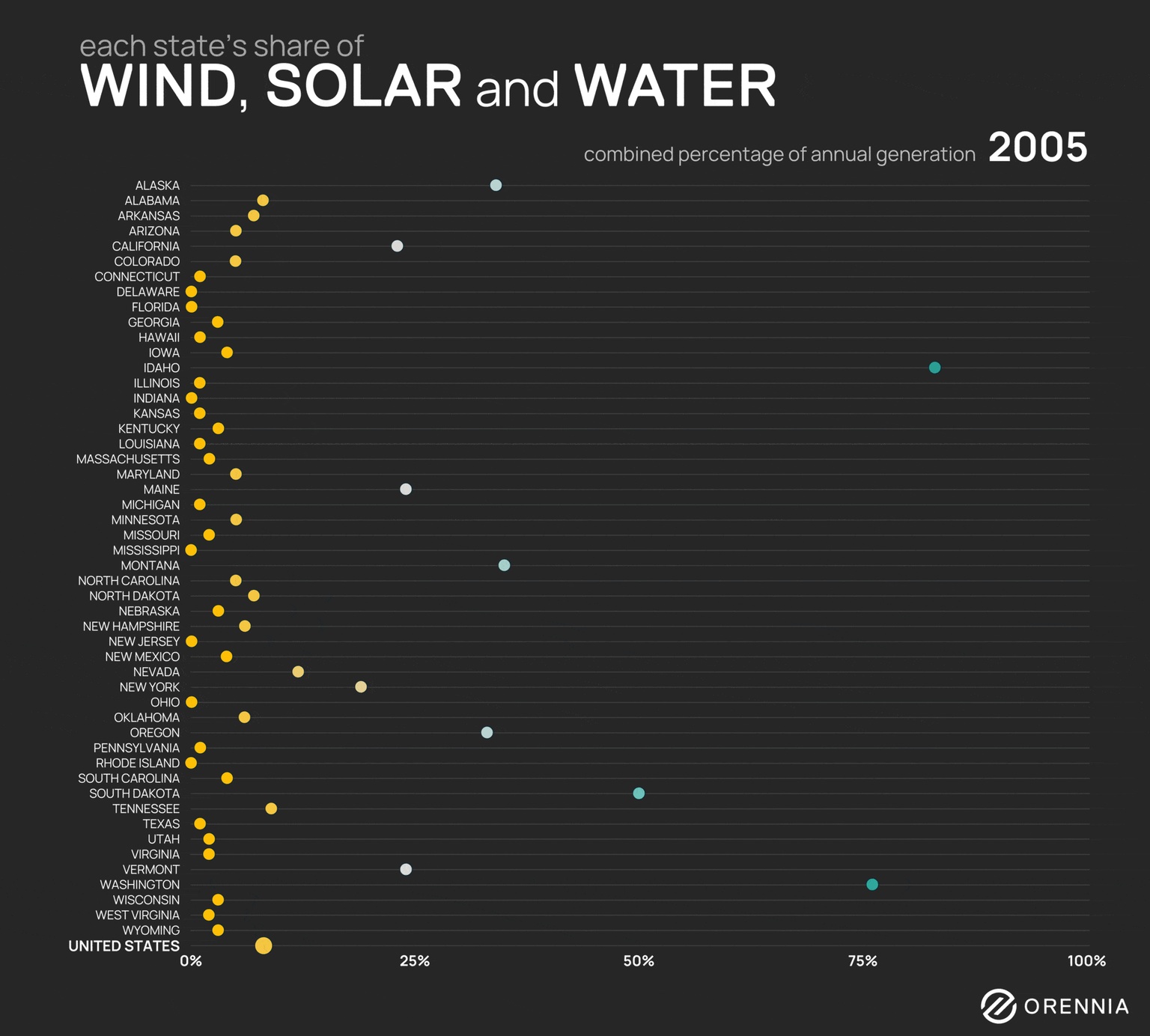
Aaron Foyer
Vice President, Research and Analytics

Aaron Foyer
Vice President, Research and Analytics

Over the past 20 years, the US has seen remarkable growth in its renewable energy sector, with wind, solar, and hydro emerging as cornerstones of the nation’s transition to cleaner energy.
Wind: Scaling New Heights
In 2005, wind was a modest player in the US energy landscape, with ~9 gigawatts of installed capacity. Fast forward to 2023, and the country boasts over 140 gigawatts of wind power, enough to power tens of millions of homes. The Great Plains has played a central role in this expansion, with Texas, Iowa, and Oklahoma leading the charge.
Solar: From Niche to Mainstream
Solar power has experienced exponential growth over the past two decades. In 2003, the US had almost no solar capacity, but that has jumped to over 150 gigawatts by 2023. The rapid decline in solar panel costs—down by more than 80% since 2010—has made rooftop solar systems accessible to homeowners and businesses alike, while utility-scale solar farms have become a significant contributor to the grid.
Hydropower: The Steady Vet
For decades, hydropower accounted for most renewable generation, and while its share has decreased due to the rapid growth of wind and solar, hydropower still maintains ~80 gigawatts of capacity. Iconic projects like the Hoover Dam and Grand Coulee Dam continue to supply reliable, emissions-free power, while smaller-scale projects have emerged to modernize and optimize existing water infrastructure.
Big Picture: Together, wind, solar, and hydropower have transformed the US energy mix. Renewables now account for over 23% of electricity generation, up from just 8% two decades ago. This shift has not only reduced greenhouse gas emissions but also bolstered energy security and created hundreds of thousands of jobs.
Data-driven insights delivered to your inbox.